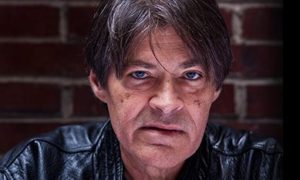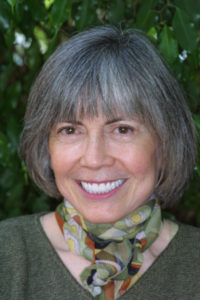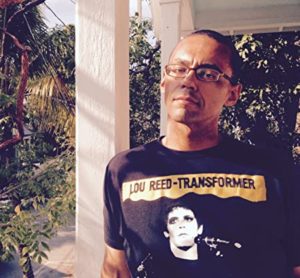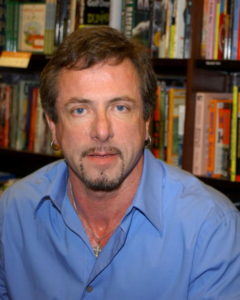Most popular articles for January 2024:
Want to know how to write horror fiction? Want to gain some insight and advice from true masters of the genre?
You’ve come to the right place. Below, I’ve gathered some writerly tips and advice from some of the best horror writers of past and present.
From the Pros: How to Write Horror Fiction
Keep the story moving. Write scenes that scare you. Channel your own pain. Embrace the unknown and uncontrollable. According to the masters, this is how to write horror fiction. So let me turn over it to them…
Stephen King: Keep the Ball Rolling

We might as well start with the reigning king of horror fiction, Stephen King. Having written somewhere around a gazillion novels, King has some hard-earned wisdom to share on the craft of writing horror fiction.
His 2000 book On Writing: A Memoir of the Craft is a riveting read. True to its title, much of the book is about his life as a writer.
But it also offers some insightful tips on how to write horror fiction — or any type of fiction, for that matter.
One of King’s suggestions is to keep the story moving, by using description sparingly.
As he puts it:
“In many cases when a reader puts a story aside because it ‘got boring,’ the boredom arose because the writer grew enchanted with his powers of description and lost sight of his priority, which is to keep the ball rolling.”
Sure, there’s a time and place for details and description. But too much of it can bring a story to a grinding halt. So be selective. Above all, keep the story moving.
Dallas Mayr: Scare Yourself, if You Want to Scare Others
Dallas Mayr (who wrote under the pen name Jack Ketchum) knew how to write some truly disturbing horror fiction.
Sometimes his “monsters” lived right there in the neighborhood, as in The Girl Next Door. Sometimes they were cave-dwelling cannibals who hunted human prey, as in his novels Off Season and Offspring.

Some of his works might be too disturbing for some readers. But trust me when I tell you he was a master of the genre who is missed by a legion of fans. The man knew how to write.
Through his past interviews and correspondence, Dallas Mayr offered a wealth of advice on how to write horror fiction. One of his best tips for aspiring writers — scare yourself.
If you want to write scary-good horror fiction, you have to create scenes that scare you as the author. Your story should thrill and chill you. After all, how can you expect your work to frighten readers if it doesn’t even frighten you?
Here’s how Mayr explained it, in a 2011 interview for This Is Horror:
“I figure if I don’t scare myself, if I don’t feel that dread of what’s coming up next, I probably won’t scare you. But the same is true of any emotion or feeling I try to get down right on the page. If I’m doing comedy, I damn well better make myself laugh. If I’m doing tenderness, I want to feel that too—I want to bleed a little.”
That’s some sage advice for those who want to write horror fiction.
Anne Rice: Go Where the Pain Is

Anne Rice, the undisputed queen of vampire fiction, prefers to write about her own obsessions and personal pains. In addition to being a cathartic experience, this approach can help writers produce more meaningful fiction.
We all have pain in our past. We all have shadows that follow us, ghostly echoes of previous traumas or tragedy. Believe it or not, these things can help us write better horror fiction.
This isn’t so much a “technique” as a natural tendency. It’s a gravitation. The mind just goes there, all on its own.
Anne Rice says she is drawn to her own obsessions, including the dark chapters from her past. She incorporates these forces within her fiction.
Here’s how she puts it:
“Writers write about what obsesses them. You draw those cards. I lost my mother when I was 14. My daughter died at the age of 6. I lost my faith as a Catholic. When I’m writing, the darkness is always there. I go where the pain is.”
Her advice fits in with the theme of this article, how to write horror fiction. But it’s broader than that, too. Writers of all genres could benefit from adopting this philosophy. What pains lie in your past? How can you bring them into your story or novel?
Shirley Jackson: Analyze Your Own Fears
Gothic horror legend Shirley Jackson used a writing technique similar to what Anne Rice described above. The author of The Haunting of Hill House (and many other great works) said that she tried to understand her own fears and to channel them into her writing.

Want to know how to write horror fiction? This is where it begins.
You have to understand fear if you hope to evoke that kind of emotion in the reader. And where better to look than your own psyche?
Many horror writers take this approach to fiction writing. After all, our writing is a direct reflection of who we are and what we’ve been through in life. It mirrors our inner selves.
Here’s how Shirley Jackson described it:
“I have always loved to use fear, to take it and comprehend it and make it work and consolidate a situation where I was afraid and take it whole and work from there.”
Think about a time in your life when you were truly afraid. Think about the nature of your fear — how it was born, how it affected you, and what you were like on the “other side.” Channel that into your writing.
Victor LaValle: Write Until You’re Convinced
Victor LaValle, author of The Ballad of Black Tom, believes authors should find their own scenes and characters convincing. If you’re not convinced by some element of your story — if you don’t believe or accept it — you should see it as a red flag. You have more work to do.

This isn’t necessarily a “how to write horror fiction” pro tip, but rather one author’s personal methodology. Still, it fits into the overall theme of this article.
Besides, any writer can benefit from this kind of self-criticism.
Think of this way: If you’re not convinced by a certain element in your horror story, how can you expect the reader to accept it?
This is how LaValle put it, during an interview for the Los Angeles Review of Books:
“There are plenty of times when it’s obvious to me that a scene, or a chapter, or a character, isn’t working. By that I mean they’re unconvincing. It doesn’t matter if we’re on Mars or in Montana, I simply don’t believe these characters in their actions, thoughts, or dialogue. That’s the easiest to deal with, in a way, because if I can see it’s false then I know other readers will, too.”
Adding to that, I would stress the importance of putting your work aside for a while, before editing or revising. When writing the first draft of a horror story or novel, writers tend to get caught up in the moment. We might write a scene and think it’s brilliant, simply because it’s fresh and new. A month later, we might review that same scene and see a dozen things that need fixing.
You’re probably here because you want to know how to write horror fiction — how to start a story and see it through to the end. But don’t overlook the importance of rewriting it.
Clive Barker: Embrace the Chaos

Clive Barker, the playwright and novelist who brought us Hellraiser, Candyman and the Books of Blood story anthologies, believes that horror fiction speaks to a lack of control.
With our technology, our science, and our relatively high brain-to-body-mass ratio, we humans like to think we’re in control. We think we have a pretty good grasp on things. (Most of us, anyway.)
But what happens when that control slips away? What happens when the universe throws us a curve ball or pulls the rug out from under our feet? Horror happens.
Here’s how Barker expressed it:
“Horror fiction has traditionally dealt in taboo. It speaks of death, madness and transgression of moral and physical boundaries. It raises the dead to life and slaughters infants in their cribs; it makes monsters of household pets and begs our affection for psychos. It shows us that the control we believe we have is purely illusory, and that every moment we teeter on chaos and oblivion.”
This insight adds a universal element to our “how to write horror fiction” theme. Chaos. Helplessness. Lack of control. Most of us fear these things on a deep, primal level. We are born with such fears. They’re part of our DNA. So they certainly have a place within horror fiction.
P.S. If you’re an aspiring horror writer, but you haven’t yet read Clive Barker’s Books of Blood series, you might want to give them a look. Some of those stories are creepy. Some are downright gruesome. All are wonderfully written. They might teach you a thing or two about how to write horror fiction.
Lightning Round: Quick Tips on Writing Horror
Need more advice on how to write a horror novel or story? Welcome to the lightning round!
- Come up with an original story idea readers haven’t seen before.
- Or, put a fresh spin on familiar horror tropes (e.g., a haunted cruise ship).
- Take the time to develop your characters before you introduce the horror.
- Create authentic, three-dimensional characters (with flaws).
- Reveal your character’s inner thoughts and fears, to help readers connect.
- Horror isn’t about monsters, but the character’s reaction to monsters.
- Give your story emotion. Let us know what the protagonist wants, and why.
- Raise the stakes. Make sure your protagonist has a lot to lose.
- Make the “monster” or villain mysterious for a while, to prolong suspense.
- Remember that people are often the scariest monsters (see Buffalo Bill).
- At some point, force your protagonist to confront the evil / monster / threat.
- The big “showdown” should come toward the end of the story (climax).
- Leave some things to the reader’s imagination. Don’t over-describe.
- Feel free to disorient your characters (and readers) by twisting reality.
- Rewrite your scary scenes until even you find them frightening.
- Be yourself. Channel your own fears and experiences into your story.
- Read, read, and read some more. It will help you learn the craft.
So there you have it, a crash course on how to write horror fiction. I hope you found some useful tips, techniques and strategies in this article, and wish you well in your writing endeavors.